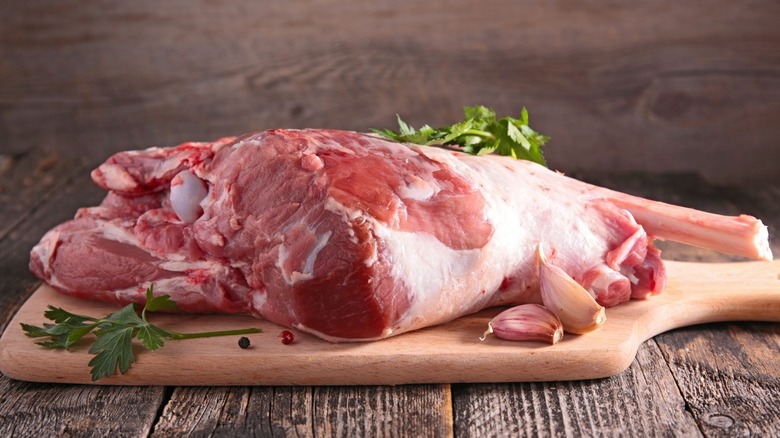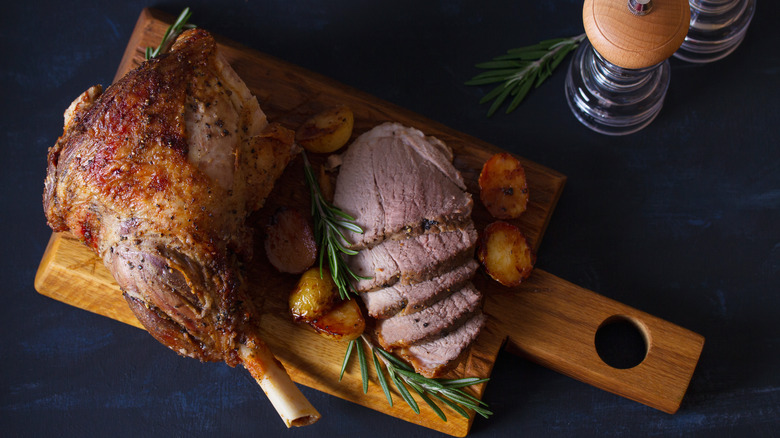Everything You Need To Know About Leg Of Lamb, According To A Butcher
Sheep are known worldwide for their meat, milk, and wool (not to mention affinity for yoga) and are thought to have over 1,000 breeds; according to the website Sheep101, there are 60 species within the U.S. alone. Some may recall the scientific marvel Dolly (named after Dolly Parton), known as the world's most famous sheep, as the first mammal cloned.
As for the meat from sheep, that's actually either called lamb or mutton. Lamb comes from a sheep that is less than a year old, while mutton is the meat from an older sheep. While lamb is the most consumed meat in North Africa, the Middle East, India, and some European countries, it only represents 6% of what we put on the table worldwide, per Helgi Library. Still, this popular meat can be found year-round in most grocery stores and can be butchered into over a dozen cuts, including bone-in leg, boneless leg, ground, kabob/stew, loin chop, rack, ribs, shank, shoulder chop, and sirloin chop. According to Jamie Oliver, the chops from the ribs are the most tender and expensive cut of lamb and are often found on the menu in fine dining restaurants. With spring being a very popular time to enjoy lamb, though, you may want to cook up a cut that can serve a crowd: the leg. Here's what renowned butcher Pat LaFrieda says you should know about prepping this tender, sweet cut of meat.
Follow this butcher's step-by-step video for preparing a leg of lamb roast
LaFrieda took to Instagram to break down (pun intended) everything we need to know about prepping his favorite meat, lamb. The 13-minute video details how to bone and tie a leg of lamb roast, along with safety and cooking tips. LaFrieda proclaims the superiority of domestic (U.S.) lamb versus the imported variety, as he calls it sweeter and less gamey due to the fact that it is grain-finished.
Using a sharp boning knife, LaFrieda begins by removing excess fat from the meat, warning us to still keep a layer of fat on the roast so the meat stays moist during its long cooking time. He saves the fat and bones for later uses so nothing gets wasted, though he removes the silver skin, a tough connective membrane found on many cuts of meat that doesn't break down in the cooking process. After expertly demonstrating how to remove the femur and shank bone, LaFrieda warns that you should always be able to see where you are cutting — and once you can't, stop! The worst mistake a butcher can make is stabbing themselves. He then shows how to properly tie up the roast with string to make it "as symmetrical as possible" for the most even cooking.
Admittedly, watching LaFrieda carve lamb isn't for the faint of heart. According to The Cold Wire, lamb is one of the more expensive meats, so you might prefer to buy it prepped from the butcher to save you time (and money) to focus on the cooking. Inspired? Try a simple roast leg of lamb recipe to highlight those sweet, subtle flavors.

